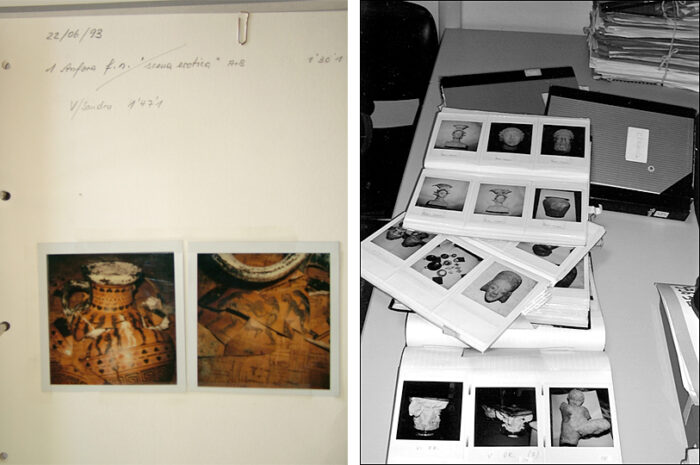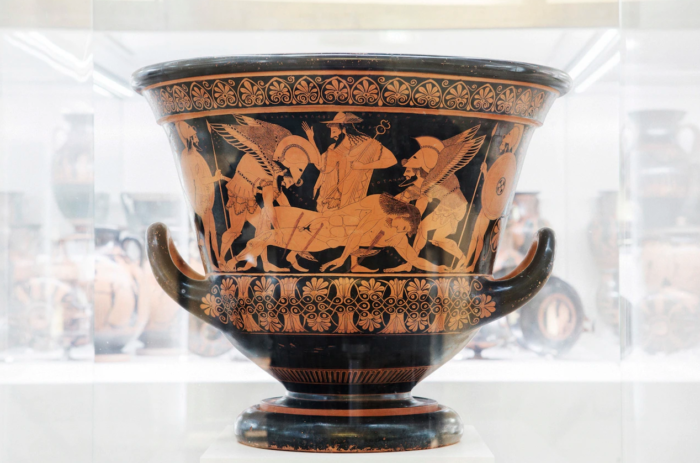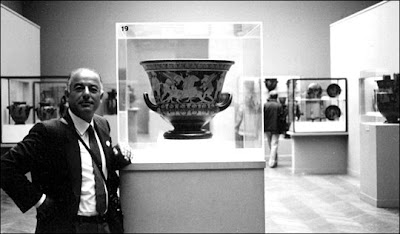It All Started With a Car Crash
In August 1995, a man named Pasquale Camera was killed in a car crash. It was a devastating scene and police started investigating the interior of his car right away. It started off as normal police procedure until one of the investigators opened the glove compartment of Camera’s car. What was inside shocked investigators. Heaps of photographs of what appeared to be stolen antiquities were piled up in the compartment, covered in dirt. What police thought was going to be a normal day of police work turned into a race to find who this man was and what he was hiding.
Years of meticulous and demanding investigations proved that Camera was a part of a smuggling ring led by mastermind Giacomo Medici. Investigators were able to locate a warehouse filled with stolen antiquities and records in Switzerland, as well as a sheet of paper that detailed the smuggling ring’s inner workings.
The Truth About A Precious Object
A record for the selling of The Sarpedon Krater, one of the finest greek vases in existence, was found in Medici’s warehouse. The Sarpedon Krater was painted by an artist named Euphronios and it depicts a scene from the Trojan War in which Sarpedon, a son of Zeus, has died. Zeus sends two gods, the god of sleep and the god of death, to take Sarpedon home. Sarpedon’s body is strong and muscular and his face is delicate and beautiful. The Greeks thought the best time to die was when you were young and beautiful, and this is exactly when Sarpedon dies. The artist used a technique called attic red figure vase painting, which allowed artists to achieve detailed representations of the human body which was important to the Greeks. The vase is in pristine condition because it was held in a tomb for 2500 years in Cerveteri, a town in Italy. The vase was purchased by an ancient Etruscan (a culture that existed just before the Romans) and buried during one of their elaborate burials.
The Met said that the vase was sold to them for $1 million by Robert Hecht Jr, an American art dealer living in Rome. Hecht claimed that he acquired the vase from a Lebanese dealer whose family had owned it since 1920, but he actually purchased it from art looter Giacomo Medici in 1972. The Met most likely knew that Hecht’s story of where he got the vase was false, but they knew the vase would attract visitors and attention so they went along with the cover story.
The Truth
The car crash opened up the real backstory of the Sarpedon Krater and we now know that the vase was stolen by members in a smuggling ring from an Etruscan tomb. Sadly, smugglers destroy valuable archaeological evidence and we would know so much more about the vase if it was excavated by archaeologists instead of thieves. For example, we would have known if the owner used the vase before it was put inside the tomb or if it held a last funerary meal. Archaeologists can see residues inside the pottery but because the looters cleaned and wiped everything off before it was sold, all that evidence is gone forever.
What Should We Do?
This is not the first object to be looted by thieves and sold on the art market; however, this vase got so much publicity that people wanted to know more about it. They were appalled when they found that ancient civilizations and cultures were being ruined to acquire a few objects to put in museums.
George Medici is not the only looter in the art world. My classmate, Lindsey Hess, wrote about the looting of a man’s tomb named Nebamun who died around 1350 BCE. Like the Sarpedon Krater, valuable evidence was lost from the tomb because Henry Salt, the looter, ripped apart the tomb with knives and saws. In addition, the artwork from the tomb is at the British Museum, not the place where it came from, taking away objects that are significant to their culture and heritage. This poses the question: what should we do? One option could be to only show replicas of antiquities in museums. It is certainly not the same as the real thing, but it might be worth it if places aren’t looted anymore and we don’t lose valuable archaeological information.
Erin Meador is a member of the Colgate University class of 2023. She is an International Relations major and a French Minor. She is a French tutor on Campus. She plans to work in architecture after she graduates.




